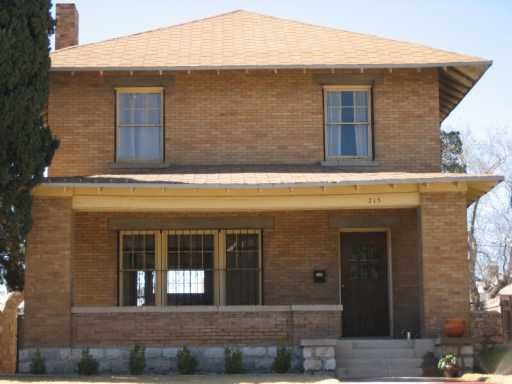Prior to yesterday, I had never given much thought to what would become of these neighborhoods as depicted in the plan. From a high level, the plan sounds great on paper. Entertainment areas have been selected, the lifestyle retail areas have been designated and the historic areas have been accounted for. Or have they? The neighborhood known as the second ward, or segundo barrio to its residents, is a place with much history. It's been the inspiration for the mexican revolution and played a significant role in the chicano movement. I ventured down into the neighborhood innocently enough at the request of a friend of mine. The place was Sacred Heart catholic church, a beautiful turn of the century building. The neighborhood breathed with vibrancy and life. The most urban neighborhood in the city didn't disappoint. I felt at home and marveled at the wonderful architecture surrounding the old church. Problem is, as so quaintly designed in the plan, the future of this beautiful old neighborhood is uncertain.

An article I found details some of the architectural and historical significance in part of the neighborhood that's within the redevelopment zone. The writer is recognized as an authority on the subject so I won't try to summarize. I'll leave it to the reader to form their own opinion. The author obviously has a stake in the outcome of the plan, but I'm still concerned whether or not it should even include this neighborhood. The church and the surrounding block appears safe as its listed as a sensitive site, but what about the rest? Frankly, the idea of destroying such a significant chunk of the city's history for a mercado and border retail (the wal-mart conspiracy) makes me sick. That is, if the reader takes the article (and the plan) at face value. And that's what is so unsettling about the whole thing. On the one hand, I'm excited. Finally it seems there are enough people who give a damn and are willing to do something about downtown. But then there's the other part of me that wonders "will they really tear down all those buildings in the redevelopment zone"?
I pray that whatever "redevelopment" does occur is as minimal as possible. What's so wrong with infill development and rehabbing old buildings anyhow? Does the downtown renaissance the city so wants to achieve have to come at such a high price? I don't think it has to..
Read the article here.
Various documents for the downtown plan.



No comments:
Post a Comment